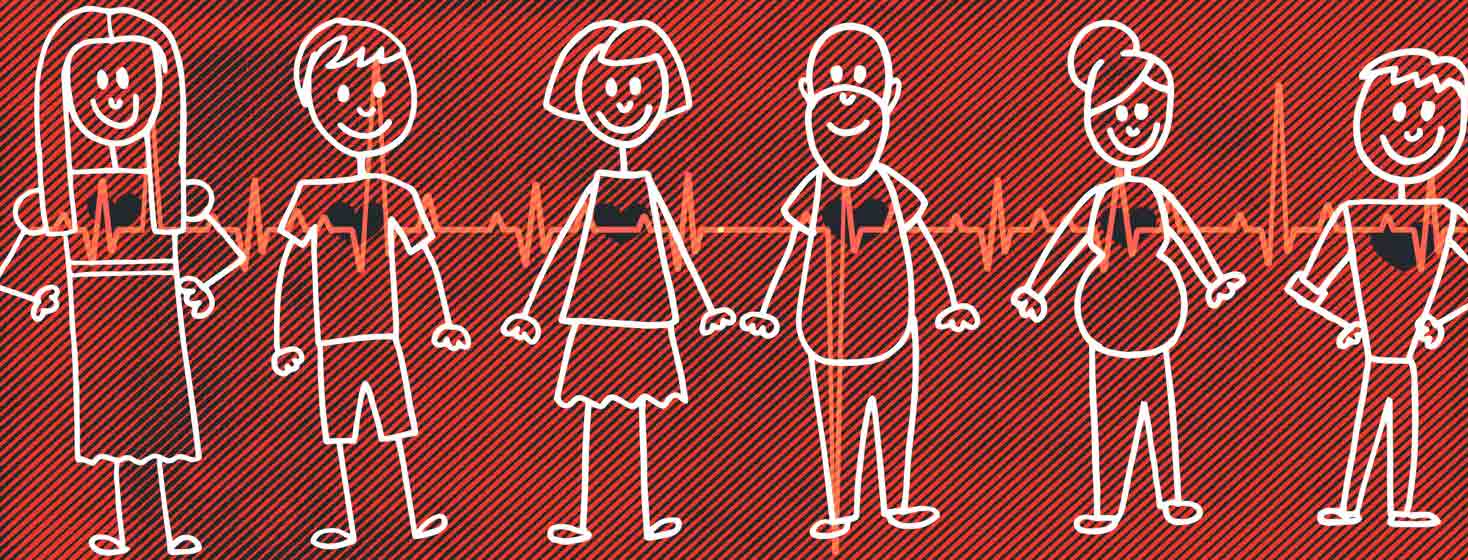Family History of Brugada Syndrome, My Story (Part 2)
Editor’s note: This is the second article in a three-part series. The first is "Family History of Brugada Syndrome, My Story (Part 1)."
“Your vision will become clear only when you can look into your own heart. Who looks outside, dreams; who looks inside, awakes.” – Carl Jung
"Thin-healthy disease" - 2010
“You have the ‘thin-healthy’ disease,” Dr. A. said as he pointed to my electrocardiogram (ECG). My father’s electrophysiologist agreed to see my brother and I. He explained how my ECG is normal, and that he was able to get a clearer reading since I didn’t have a lot of fat on my upper chest below my clavicle. My brother’s was normal, too. I exhale. Good thing he didn’t take the reading from my backside, I thought, or we wouldn’t be talking “thin.”
My father had been diagnosed with a rare genetic heart rhythm condition, Brugada Syndrome, a few weeks prior and received an Implantable Cardioverter Defibrillator (ICD) as a treatment for the condition. Best case scenario, the ICD was like a traffic conductor for law-abiding cars; worse case, it would avoid an all-out crash.
At the time, my knowledge was rudimentary. I knew that Brugada could cause sudden death, and that was Scary with a capital S. My dad had survived, but he’d had many periods of lightheadedness, haziness, and some blackouts. I didn’t know how likely it was that my brother or I also had the condition, and I thought a positive ECG meant an instant ICD implantation. But to warrant an ICD, we would need to exhibit symptoms, like my dad. If only someone had mentioned that, it would have been reassuring.
Thankfully, though, it seemed that my brother and I were 100% clear.
Updated information – 2017
“Hey, it’s your sis’. I guess you might be in a meeting or something. I just wanted to leave a message to let you know that I saw a new primary care doc today and she looked up that heart condition that dad has, and said we should be monitored yearly by a cardiologist because you can develop it as you get older. I made myself an appointment, and I thought you might want to know, too....”
My cardiologist visit
Dr. B. looked at the print-out that my heart and the machines have created. I googled her before the appointment and saw she was a jazz singer as well as a cardiologist.
“Your ECG shows a right bundle branch block,” she said, as if she was calling out a slight off-beat from the drum section. This sounded different than the “thin-healthy” disease Dr. A. had observed a few years back, though I can’t be certain it is different. However, she assured me in her smooth jazz voice that it’s not an abnormality that is meaningful or troubling. It certainly isn’t a Brugada rhythm.
“I think you’ll live.”
Dr. B. ordered a test to check my heart for structural abnormalities, called an echocardiogram. The technician let me look at my heart on the screen towards the end of the test. He smiled and said, “I think you’ll live.” My heart appeared structurally sound, and I often pictured it strong and beating when I went out for a jog.
Pregnancy and Dr. C.
A few months later Dr. B. referred me to Dr. C., an electrophysiologist who was more specialized in Brugada than a general cardiologist. Dr. C. had a jawline that could have landed him the lead male role in a black and white flick, and I imagined in another universe and time that he and Dr. B. could have performed together.
He asked me about the times I fainted as a child: the ice-skating rink when the table fell on me; in first grade when I stubbed my toe. These are likely a normal vasovagal response to pain or stress, he explained, and it was encouraging I hadn’t passed out in adulthood.
“However,” he said, “with your family’s history, I think the next course of action is to do a procainamide challenge. It’s a simple test where we inject a drug via IV and see if you exhibit the Brugada pattern. If you do, you still don’t need an ICD unless you exhibit symptoms in the future.”
Isn’t one symptom sudden death? I wondered. But there was a more pressing concern:
“I’m pregnant,” I said. I wasn’t yet showing. I swear his face started to fall, but he caught himself.
“Congratulations! No rush, we can do the test once you’re done with pregnancy and breastfeeding. In the meantime let’s do a 24-hour Holter monitor.” I guess I’m not off the hook yet, I thought.
More monitoring in lieu of tests
As my pregnancy progressed, I had periods of elevated heart rate and dizziness, as with many pregnancies, though the docs kept an extra eye on me. I wore another Holter monitor before the pregnancy was through, and all looked fine. When labor came, thoughts of Brugada and ECG’s were far from my mind; I delivered a healthy baby girl.
I planned to breastfeed, so I would have to wait until weaning for any more tests. Even though the docs were trying to do their due diligence, all this monitoring and testing was starting to feel more like a chore than anything else.

Join the conversation